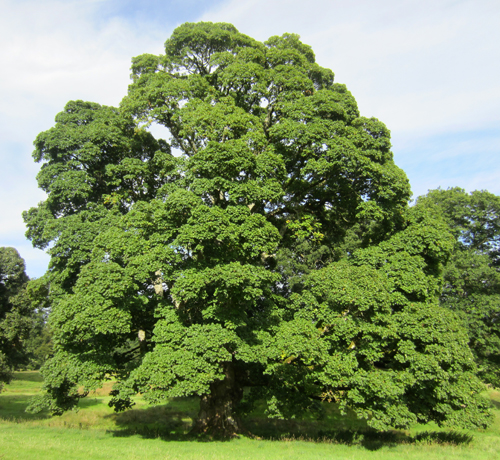by Peter Howard
Visiting Professor of Cultural Landscape, Bournemouth University
Click here to read more articles on Biodiversity Offsetting

Following the announcement by the Secretary of State concerning Biodiversity Offsetting (BO), the media seem to be full of the threat to our ancient woodlands. These ancient woodlands are of undoubted ecological and historical significance, but they are few, and small in area. There would be little difficulty in declaring them sacrosanct. The wider landscape of England is equally under threat, and the most difficult phrase in the announcement is that an offset might be up to an hour’s drive away … perhaps in the next county. Here lies the greater menace.
This obviously implies that a worthy biodiverse landscape worth experiencing is not expected to be everywhere, but that it is something that we get in our cars to go and visit, assuming, of course, that we have a car to get into, as the places likely to benefit from the offset are not often accessible by public transport. The landscape thus becomes something to visit, not a place to live. This is the government which has promised more localism, but seem determined to destroy their own policy. If all offsets were to be restricted to the parish where the development was proposed, this problem of the wider landscape would largely be resolved. This is not likely to happen because there is deeper process at work, which amounts to slow creation of the division between Protected Landscapes, managed by Conservation Officers and inhabited by the middle-class, and recipients of Offsetting, and non-protected landscapes where development will take place.
Surely this is an exaggeration? In the 1950s and 1960s when National Parks and Areas of Outstanding Natural Beauty (and Green Belts) were designated, there was surely no expectation, or intention, that they would significantly alter the social composition of the countryside, but Blacksell and Gilg long ago showed the effect of the ‘gentrification’ of the AONBs and estate agents throughout the country will be very well aware of the premium on house prices in Protected Areas. The process is already well established, and offsetting can only exacerbate it, not least because many conservationists will find it difficult to oppose an income stream into the areas where they are already employed.
This process of designation coupled with gentrification is very powerful, and is unquestionably responsible for having saved many natural and landscape sites of real importance from deleterious development, but this may be at the cost of the ordinary or everyday landscape where most people live. The opposing force is the European Landscape Convention, which is now part of UK law, but is written in such vague terms that it is never easy to demonstrate that it is being broken. Nevertheless the Convention applies to all landscapes, and is very clear that ordinary or everyday landscapes are significant, and of special value to their residents. A process that continually favours the protected against the ordinary landscape could reasonably understood as in breach of the Convention.
This chimes with ideas coming from critical heritage theory, notably the concept of the Authorised Heritage Discourse (Laurajane Smith). Conservationists may wish to be viewed as neutral, objective experts who can arbitrate between the demands of other stakeholders, but we now understand that this is certainly not the case. They too have an agenda, and their wish for power and control is no less than others, especially when their jobs are threatened by cutbacks. When they are employed to manage sites within Protected Areas, they will clearly support those sites. Thus we are seeing the hesitant emergence of a strange alliance between developers and conservationists, with their own territories—the ordinary landscapes where most people live controlled by developers against protected middle-class landscapes with conservationist control.
Even our District Councils are far too broad a territory to resist this movement. Most districts have protected areas, of which there are many different designations, and also large areas of ordinary landscapes. My own village, Winkleigh in mid-Devon is surrounded by many miles of ‘ordinary landscapes’ though much loved by locals. Already it is obvious that wind-power developments will be accepted in these areas but not in the coastal AONB. In future we can await more development off-set against improvements to our National Parks, the AONBs and the core area of the Biosphere Reserve in Braunton Burrows.
Not only is this process socially divisive, it is also inefficient. Few doubt the value of multi-functionality in the use of land resources in our crowded island. This is commonly applied to farmland, and the ecosystem services we can expect, but is true of all land. Our residential land should be doubling as nature reserve and energy generation. This needs to be true also of our Protected Areas, including the nature reserves, not only nature protection but also recreation. Biodiversity offsetting offers a different prospect, some areas for nature alone, some for concrete alone.
So BO really does come tainted with an unpleasant aroma, and a threat to all of our ordinary landscapes and to all who live outside the palisades of the protected areas. One is tempted to wonder what percentage of our law-makers live within such protections?
Click here to read more articles on Biodiversity Offsetting



























Well said. Current government policy on the countryside is deeply discriminatory in that it encourages local authorities to remove the means by which anyone including non car owners can access the countryside, i.e. local buses. And if its mitigation for urban sprawl is that people will be expected to drive to the next county to experience biodiversity the cure will be worse than the disease. Though of course good news for the roads lobby…